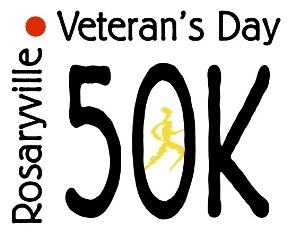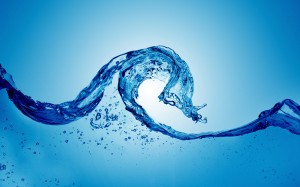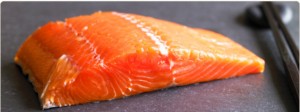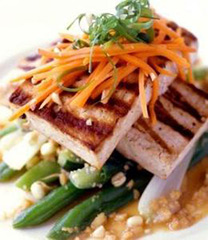Shannon Greenbaum
137H
Unit 2 Assignment
11 October 2013
Red White and Blue HOPE
Copyright infringements aside, the iconic “HOPE” poster of Barak Obama became an overnight sensation hours after its first printing. The image, which every politically interested person has seen, quickly morphed from a simple sketch, to a viral sensation and one of the Obama 2008 campaign’s most popular propaganda. How was a poster with only the emblazoned head of Obama thoughtfully looking off into the distance and one word emblazoned at the bottom able to create such a stir in a society that is known for its appreciation of details and that is constantly bombarded with political campaign slogans? Simple. The posters color scheme, use of certain styling techniques, a simple one word logo was able to convey the rhetorical appeal President Obama to a skeptical audience.
The style of Obama’s “HOPE” poster is a peek into modern culture that artists have been trying to emulate for years. In todays fast pace society, simplicity is ingenuity. The particular style of the “HOPE” poster encompasses everything from color scheme to facial expression and posture. A good advertisement is one that conveys an entire message in one glance. In the “skater” image of Obama, he is printed only in red, white and blue, almost color scheme and block shadowing meant for a comic strip. Fairley’s three color scheme used in the poster, manage to draw the attention of the audience as well as convey a form of bipartisan government with only a single glace at the poster. By mixing red (the color traditionally used to represent the Republican Party) and blue (the color traditionally used to represent the Democratic party) Fairley manages to allude to a president that will be willing to overcome stereotypes and cross party divides. The white in the poster also gives it the traditional “American” appeal by using the nation’s colors of red, white and blue. After the Obama campaign faced harsh criticism for Obama appearing “un-American” by the initial absence of an American flag on his lapel, and his supposed falsified birth certificate, the poster seemed to be a depiction of “100 percent Americanism.”
With racial profiling also proving to be a hot topic in the 2008 election, the color scheme of the “HOPE” poster, also seems shifts the focus away from skin color and back to real American values. The color of skin should not be playing a huge part of any election as long as American ideals, represented by the red, white and blue are displayed in both candidates.
Along with the poster’s color scheme, the stance and facial expression of Obama also was used to persuade the audience of his leadership and comically take a swipe at some of his critics. Seemingly modeled after a poster of Lenin, the poster takes a comical jab at critics who suggested that Obama was a socialist intent on pushing socialist policies through the US government. Although playful and clever, this subtle hint at opponents was overlooked and was part of an ineffective rhetoric as it only was overlooked and seen not as a joke but as a representation of a socialist Obama.
The three quarter head shot of Obama is similar to that seen with Lincoln on the five dollar bill and with another similar poster that was made for the Kennedy presidential campaign. Also similar, is Fairely’s use of hatching. Hatching, a technique which is basically composed of tiny lines that are used to add detail, is used in the “HOPE” poster to dispel Obama’s inexperience. By using the hatching on the outer border of the face, Fairley adds depth to the image with also seem to depict a depth in Obama’s experience with politics. No more is he a fresh faced newbie but an experienced and somewhat aged politician.
Although Fairley’s artistic devises are important in delivering the rhetoric associated with the “HOPE” poster, Obama’s posture and facial expression also factor in. With Obama’s posture mirroring famous and popular politicians and presidents, the message is that Obama will only continue to achieve what those two great men did. Obama’s uplifted expression pensively gazing off into the distance seems to exclude leadership and a strength that would be necessary to lead the United States.
Although not an original design, Obama’s sunset pin logo that was incorporated into the poster, is also used to convince the audience of Obama’s electability. A sunset is a symbol typically viewed with a new beginning or a new start. After a turbulent and unpopular end to the Bush administration, both candidates in the 2008 election sought to be recognized as bringing a breath of fresh air into the government. Obama’s campaign effectively communicated that message with the slogan “Change You Can Believe In” as well as the use of the sunset symbol. In the shape of a circle, or an “O”, the symbol ads more Obama appeal to the already overflowing poster.
Finally, once again drawing on the idea that simplicity is ingenuity, Fairley was able to channel the entire meaning of the Obama campaign behind one word, “HOPE.” Of course, by using only one word, Fairley also leaves a little of the rhetorical interpretation up to his intended audience. Is the audience supposed to believe that Obama is the hope that we have been waiting for or that the audience is supposed to be hoping for something in particular. By making the audience think about the meaning of the one word logo, Fairley effectively made his advertisement stay in the mind of its’ audience. By using once word easily emblazoned across the bottom of the poster, HOPE also became interchangeable with words like “PROGESS” and “CHANGE” that was also expected to influence voters.
By using styling techniques such as color scheme, hatching and body positioning, Fairley was able to effectively able to downplay most criticism to Obama’s campaign and market Obama as a seasoned leader whose American values made him ready to be the next President of the United States. By using a simple, interchangeable one word logo, Fairley also was able to make the audience think about the Obama campaign’s message and make it more marketable. By combining all of these techniques in one modern day poster, the “HOPE” poster became one of the greatest rhetorical campaign advertisement to date.


















